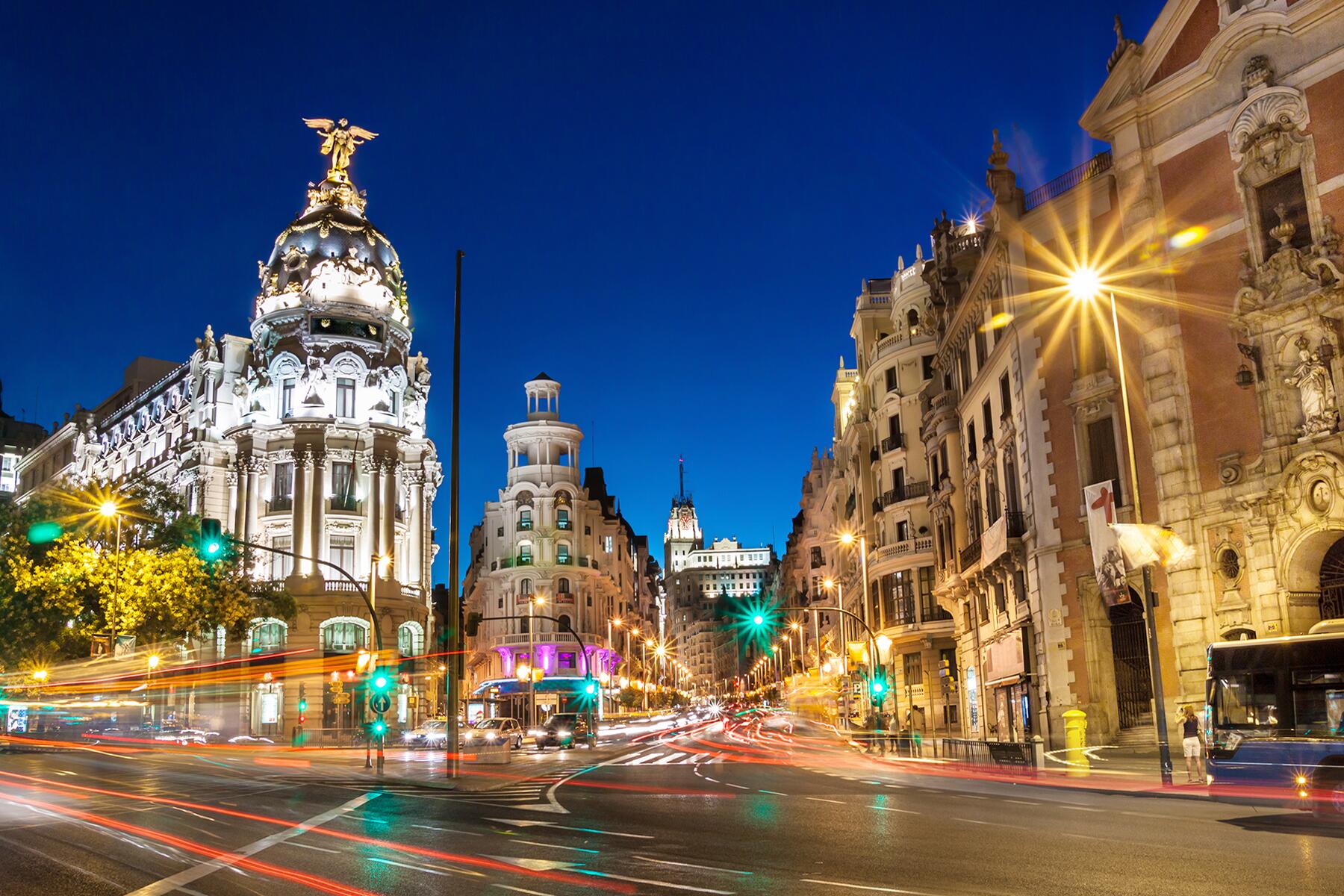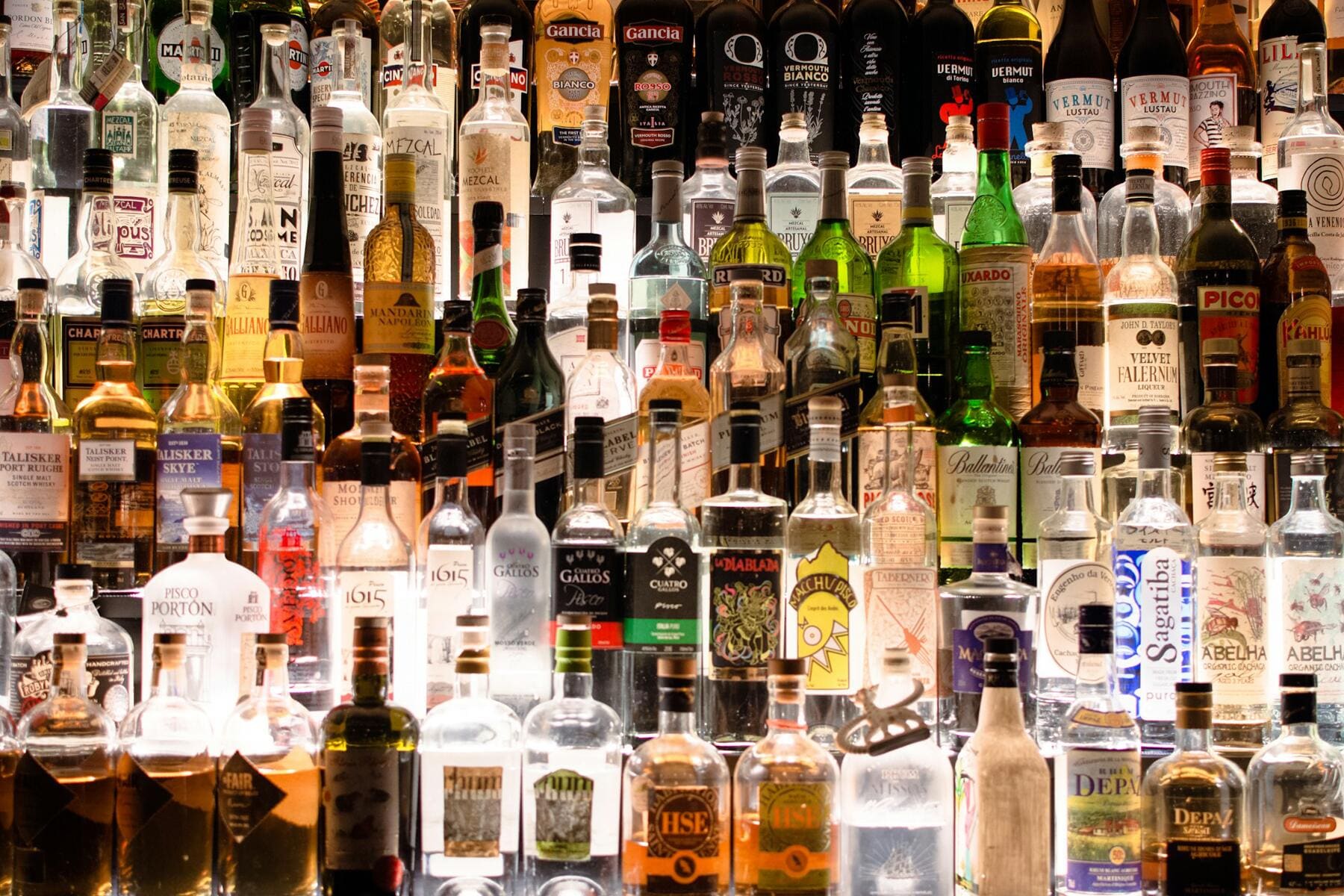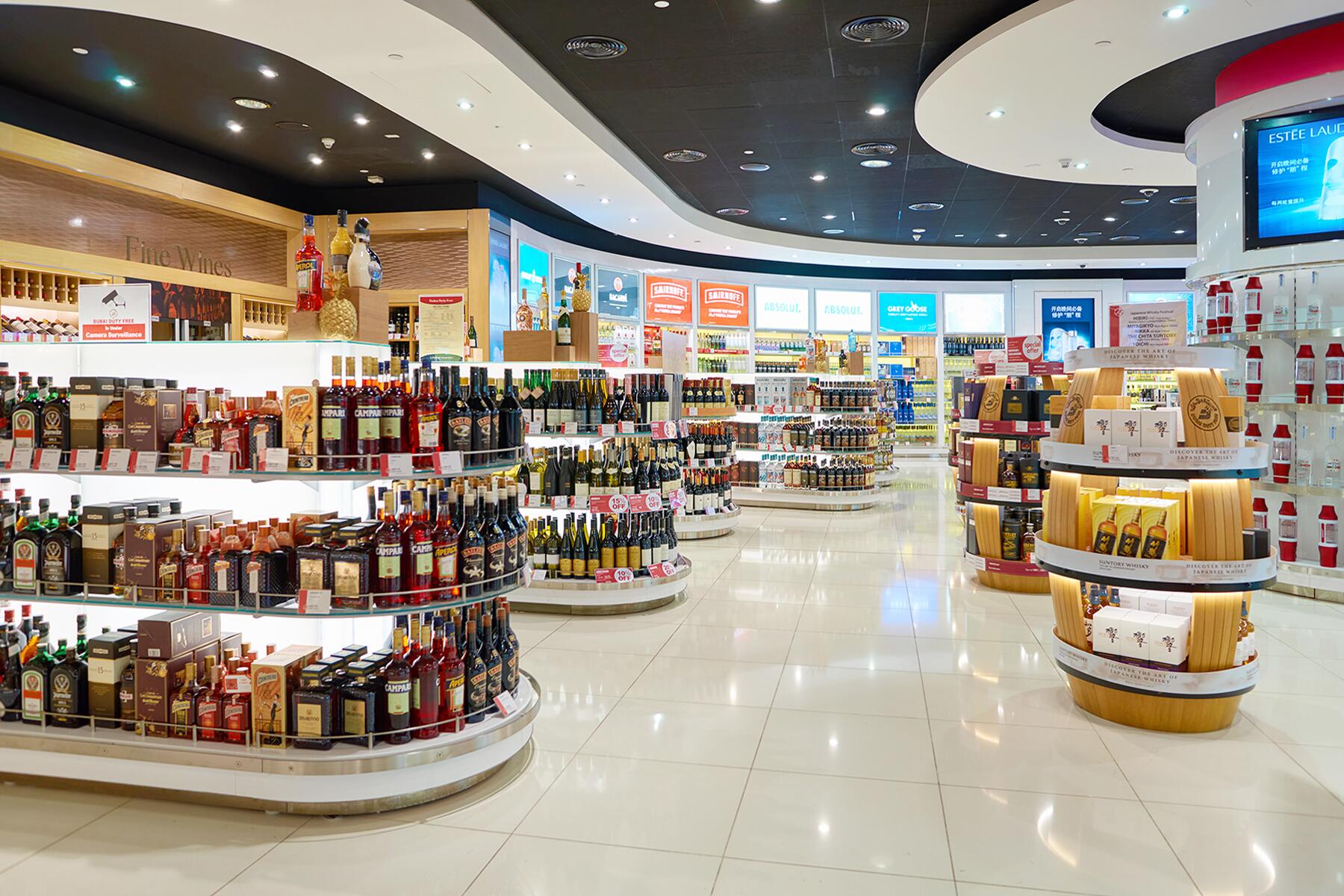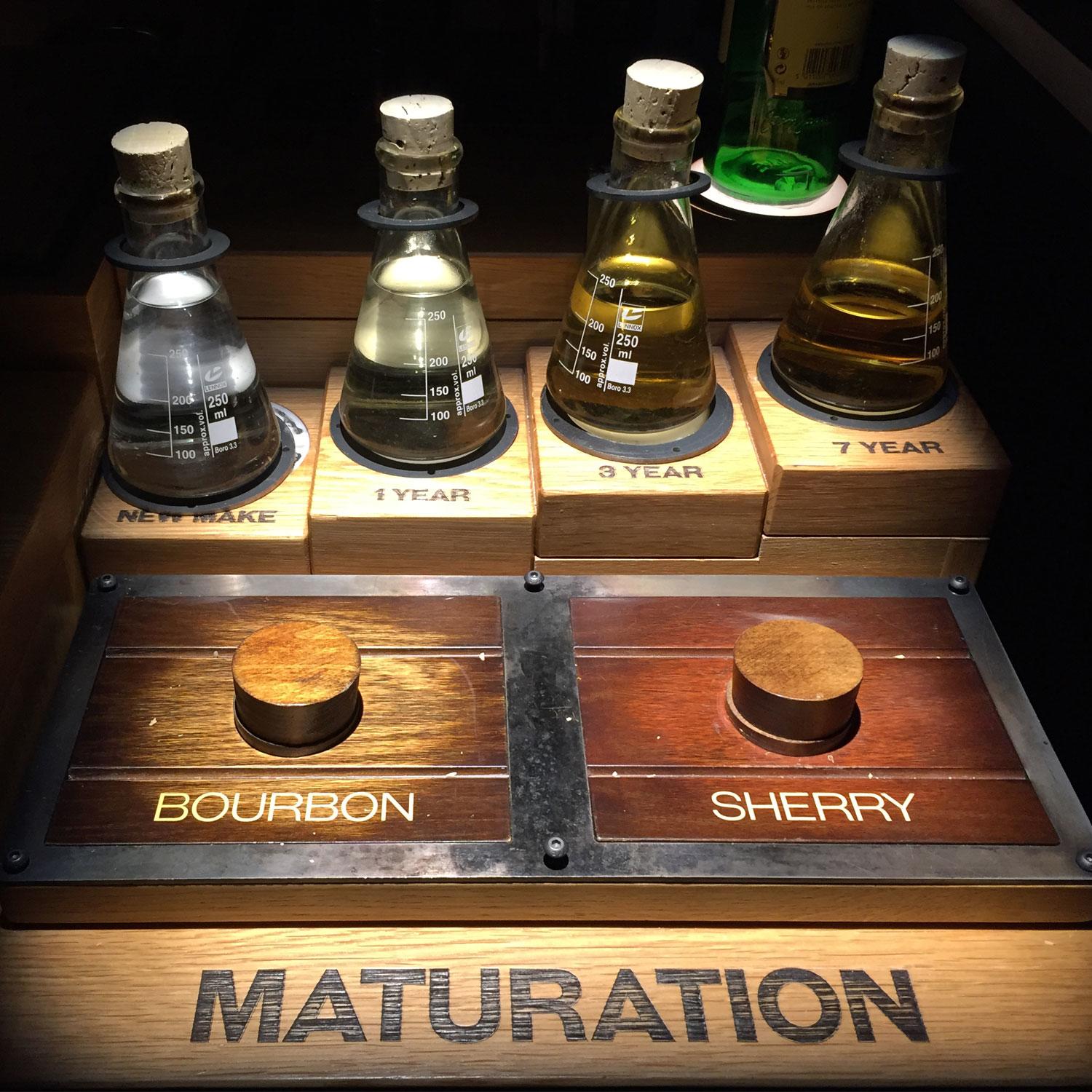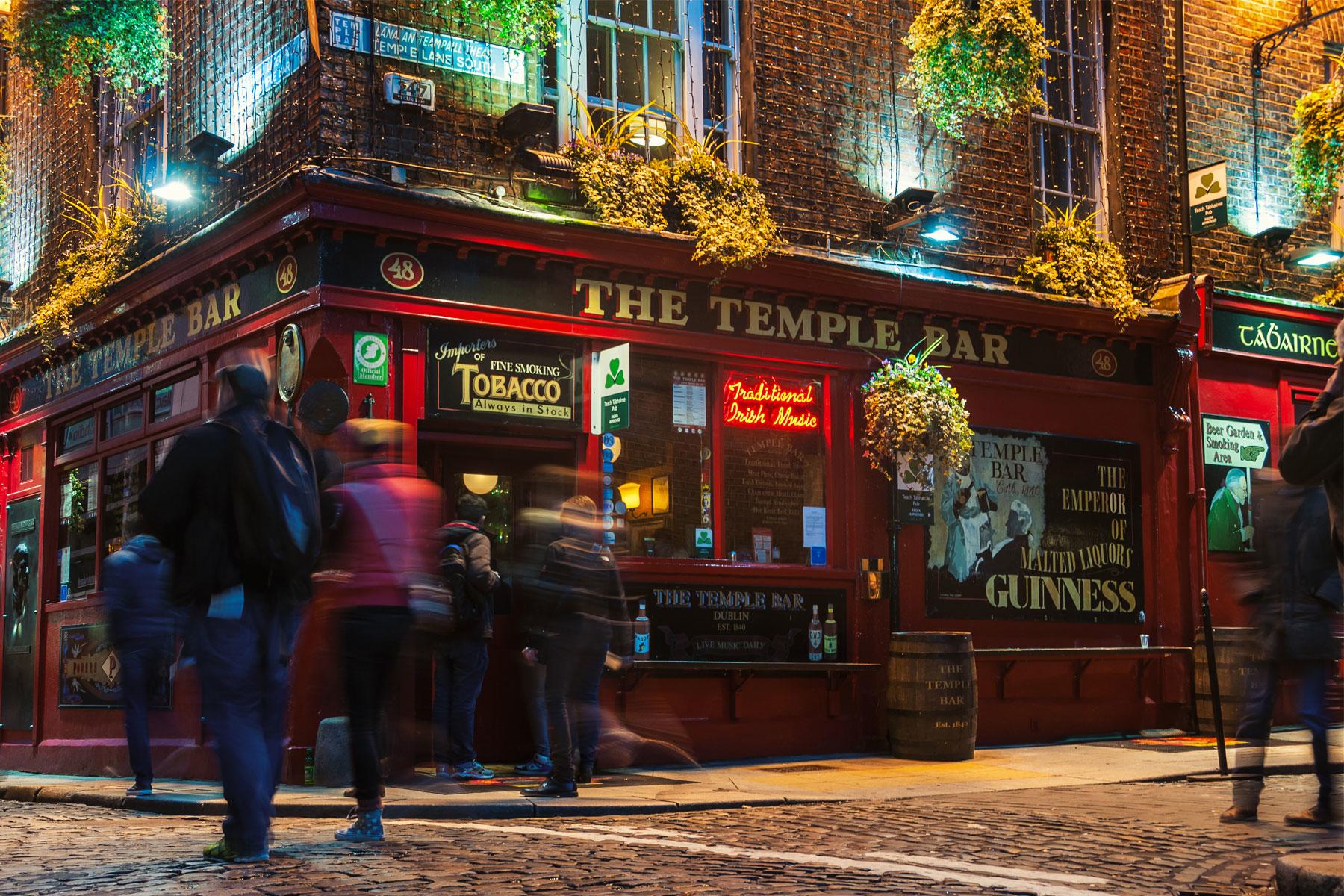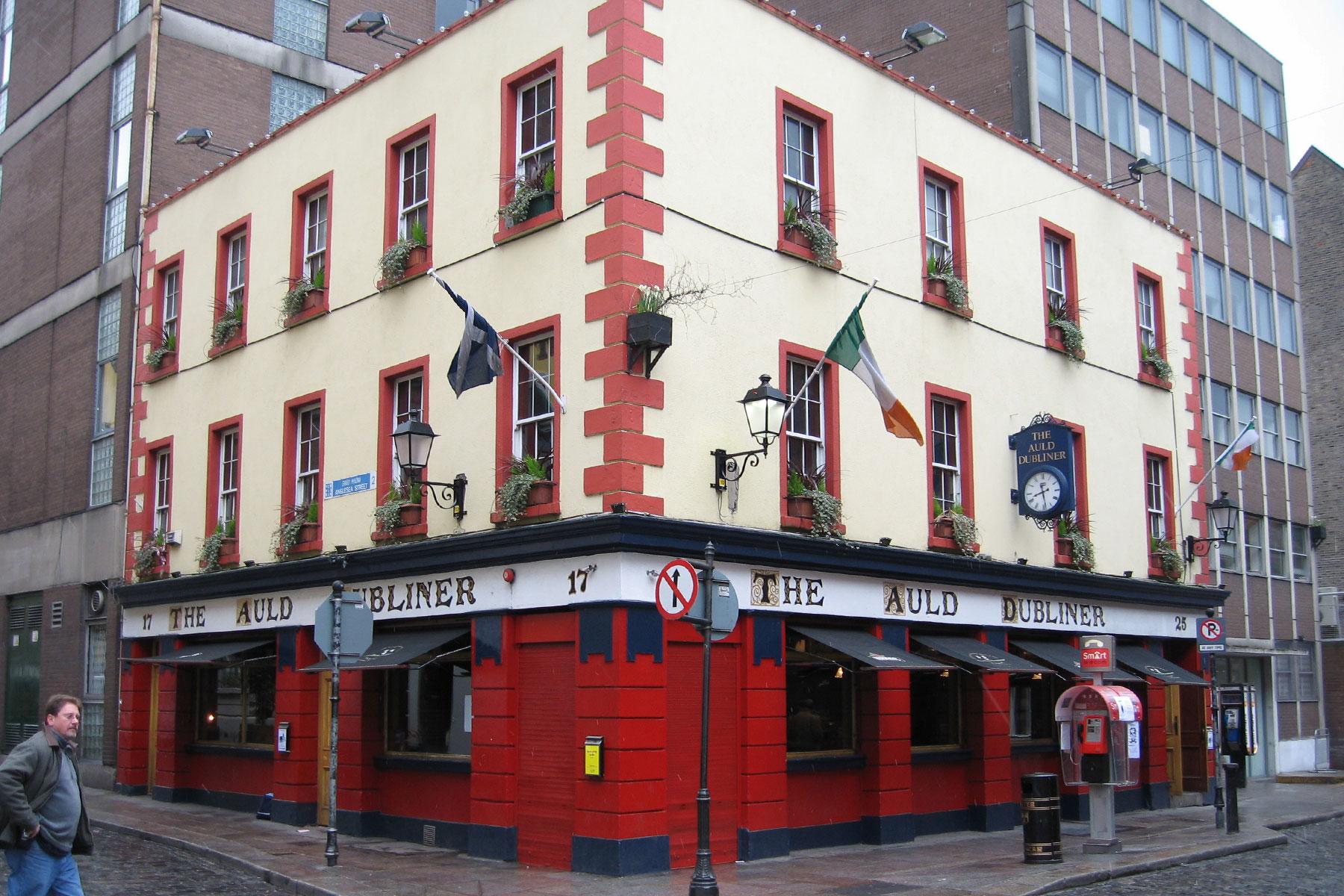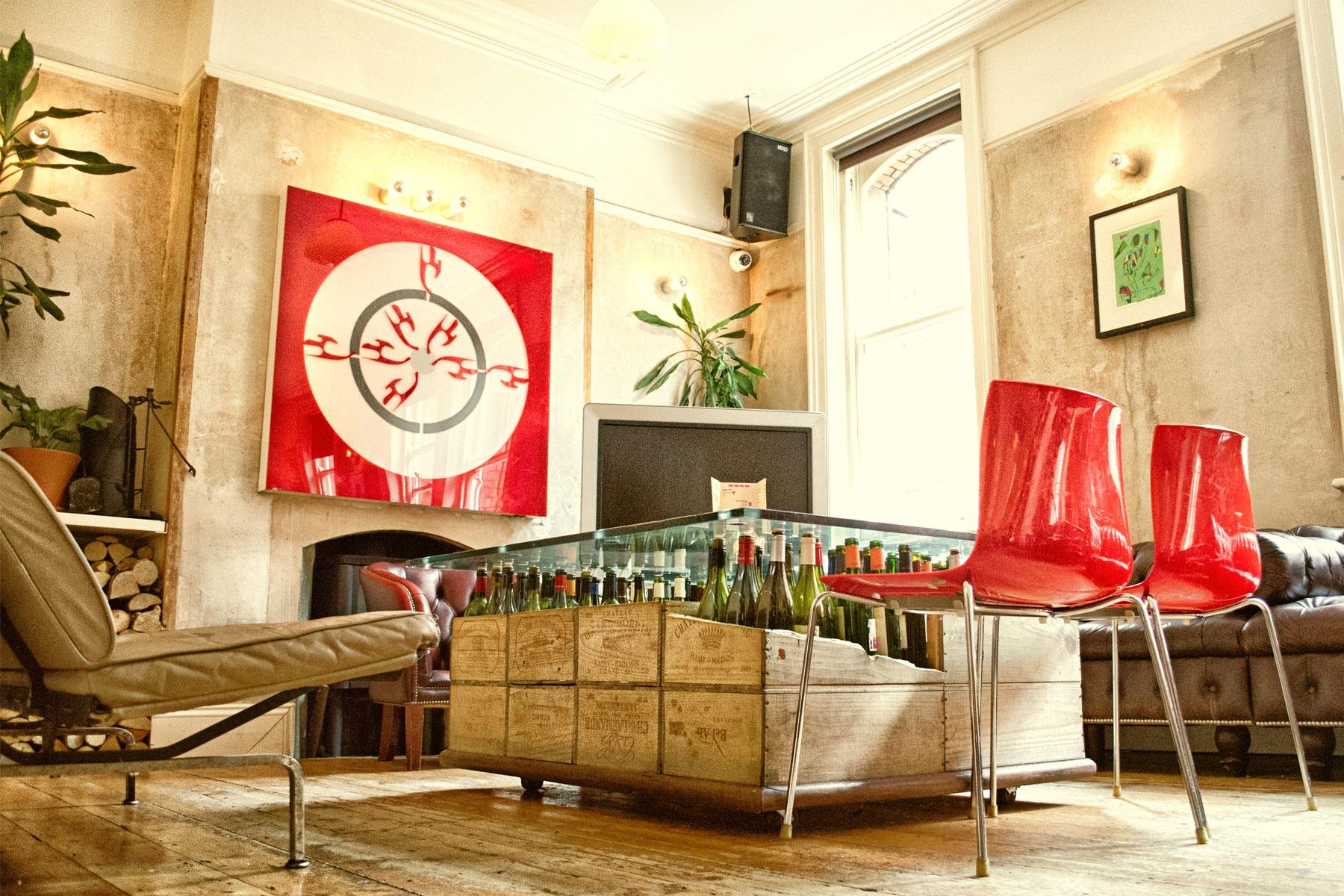Exploring the booze, bars, and banter of Ireland’s Fair City.
Dublin is a city known for many things: its revolutionary spirit, a hardy literary history, and of course, its drink. The reputation the Irish have for liking their liquor is long-standing and well-earned. Perhaps it served as an antidote to a hard-scrabbled life—generations under British rule, chronic poverty, famine. Or maybe the instinct to raise a glass and share a laugh, whatever their hardship, is just part of the Irish character. Either way, when you’re in Dublin, you drink.
A Pint of the Black Stuff
Any discussion of drinking in Ireland must start with Guinness. This dark, creamy concoction is unmistakably Irish; more recognizable than any flag, more celebrated than any U2 anthem. Lighter tasting than its rich appearance would suggest, Guinness is the type of beer you can drink all night long. And there is no better place to do so than in Dublin, where a properly poured Guinness has been a matter of national pride since 1759. And yes, the pour matters.
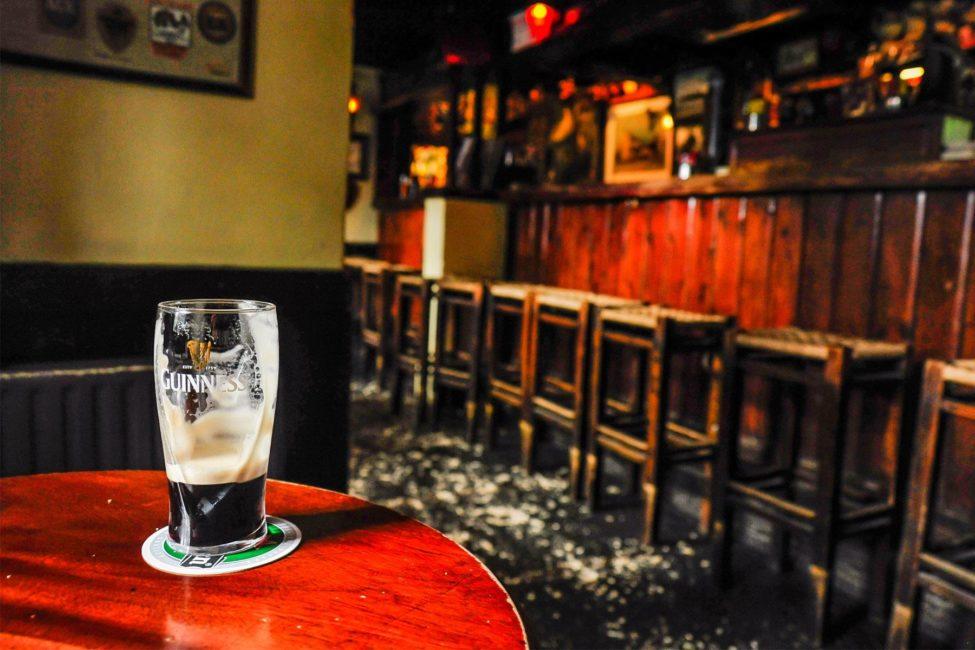 Tylerstipp | Dreamstime.com
Tylerstipp | Dreamstime.com
The two-part pour process starts with a 20-ounce, tulip-shaped glass tilted at 45 degrees. Watch the barman as he aims for the harp on the glass and lets the Guinness flow until three-quarters full, then sets it on the bar to surge and settle for exactly 119.5 seconds, according to Guinness guidelines. During that time, millions of tiny bubbles cascade down the sides of the glass and back up through the center to form the velvety head. Then he tops the beer off slowly so as not to disturb its frothy white crown, and lets it briefly sit again before serving. The perfect pour is an exquisite mix of anticipation, craftsmanship, and theatricality.
Recommended Fodor’s Video
Irish Whiskey
Before the 20th century, Ireland produced the world’s preeminent whiskey, and in 1900 it reached the zenith of its popularity, selling 12 million cases a year. But demand waned, due in part to the Irish Civil War, trade disputes with Britain, and American Prohibition, and by the 1960s Ireland was only producing around 4% of what it had at its peak.
“Whiskey is liquid sunshine.” —George Bernard Shaw, Irish playwright
But Irish whiskey has been making a strong comeback over the last 15 years and is one of the fastest growing segments of the spirits market. Since 2002, high-end Irish whiskey sales are up over 700% in the US, and super premium varieties are up an astonishing 3400%, as reported by the Distilled Spirits Council. The Council’s Senior Vice President Frank Coleman attributes this to, “Irish whiskey’s smooth flavor profile [which] makes it particularly appealing to adult consumers who are new to the whiskey category.”
Jameson is the best selling Irish whiskey in the world, and taking a tour of their Bow Street distillery in Dublin will teach you about the company’s storied past, how their iconic spirit is made, and how it differs in taste from its Scottish and American whiskey counterparts.
You can also stop by the Irish Whiskey Museum on Grafton Street for an overall history of the hard stuff and a sampling of several Irish brands. The museum’s Whiskey Evangelist and Course Coordinator, Niall Tubridy, promises visitors an “unbiased perspective” into Irish whiskey, explaining that people “may have been fed a whole lot of marketing bumf in other establishments, but when they leave the IWM they will have a much better understanding of what Irish whiskey is about, its similarities to others, but also its complete distinctiveness.”
Tubridy cites the production of Single Pot Still whiskey as being particularly exciting because that variety is “a thicker, creamier, oilier whiskey, distinctly Irish.” A few of the brands that he recommends are Redbreast, Green Spot, Yellow Spot, Powers John Lane, and Barry Crockett Legacy.
Poitín
A traditional Irish spirit distilled in small pot stills, Poitín (pronounced “POTT-cheen”) was usually produced in backwoods areas away from the unwanted attention of the law. So basically, it’s Irish moonshine; sometimes affectionately referred to as “Mountain Dew.” And with historical alcohol volumes reaching as high as 90%, it hasn’t been for the faint-hearted.
“The worst thing about some men is that when they are not drunk they are sober.” —William Butler Yeats, Irish poet
Although, Donal O’Gallachoir, brand manager for Glendalough Distillery in Co. Wicklow, takes issue with Poitín’s comparisons to American hooch. “A lot of people are under the misconception that [Poitín] is moonshine,” O’Gallachoir says. “It has a very different flavor profile and distillation style than a moonshine,” he points out, adding, “If you like whiskey, you’ll like Poitin.”
Most Poitín sold today hovers around the 40-60% ABV mark, so you need not worry about going blind. Declared legal in Ireland in 1997 (moonshine was legalized in the States in 2010), Poitín can be enjoyed the same way as whiskey: straight, with mixers, or as part of a craft cocktail. In fact, O’Gallachoir credits Poitín as an “important part of the renaissance in Irish craft distilling, [and] the rebirth of Irish whiskey…It’s part of our heritage.”
Where to Drink in Dublin
So now that you’re familiar with the Holy Trinity of Irish booze, it’s time to “go on the tear” (go drinking), but where? With a pub on practically every corner, the choice can be daunting, so you need to have some semblance of a plan.
INSIDER TIPWhen paying with a credit card, most places will ask you if you’d like to pay in euros or dollars—always choose euros. If you choose dollars, they do the conversion for you and charge an added fee for the “convenience.”
Party in Temple Bar Neighborhood
The main concentration of Dublin nightlife is in the Temple Bar neighborhood, just south of the River Liffey. Think of it as the Bourbon Street of Dublin, where every tenth group is a stag or hen party, and packs of revelers walk the streets as music spills out from nearby pubs. The crowd is young, the scene touristy; it’s a place known more for its hard partying than for its traditional Irish pub ambiance. If a rowdy time is what you’re looking for, Temple Bar will not disappoint; and if not, you should still give it a look-see, but be prepared with a Plan B.
Stop by The Temple Bar Pub, as it’s one of the most popular spots in the area and the perfect photo op. When packed, it feels more like a college frat house inside (the smell of 170 years of drunken sweat and spilled beer permeating every corner), so best to grab a spot outside. As for the bathrooms, you should probably just avoid them and go at the next place.
Just down the street is The Auld Dubliner, one of the better spots in Temple Bar, with a festive atmosphere and local musicians playing all day—more pop hits than traditional Irish tunes, though. You’ll pay tourist prices here, just like most other pubs in the area, but you’ll be having too much fun to care.
INSIDER TIPClosing times vary by bar and location, but generally, you can expect Dublin pubs to stay open until sometime between 11:30pm-1:00 am on weekdays, and 12:30am-2:30 am on weekends. After hours clubs, like the famous Copper Face Jacks, stay open until 3:30 am.
Historic Dublin Pubs
If you’re looking for a watering hole with a bit more history, the kind of place where James Joyce or Oscar Wilde might have frequented, then you’ll want to check out the 16 remaining Victorian pubs in Dublin. These haunts date back to the 1800s, complete with many of the original features, stories of famous regulars, and authentic old world charm.
Established in 1823, The Palace Bar became the go-to pub for Irish writers and newsmen of the 1940s, ’50s, and ’60s. Seemingly untouched by time, the décor is much the same as it was when it first opened. Sitting in the back room under a striking stained-glass skylight and pictures of the famous writers who used to drink there (Brendan Behan, Robert “Bertie” Smyllie, and Samuel Beckett among them) feels a bit like going back in time.
Upstairs is an Irish whiskey lover’s dream, with over 100 varieties to try. In fact, they are such whiskey connoisseurs here that they’ve recently begun bottling their own brand, Palace Bar Whiskey; the first pub in Ireland to do so since the ’70s.
“I only take a drink on two occasions—when I’m thirsty and when I’m not.” —Brendan Behan, Irish writer
Named “Dublin Pub of the Year” at the 2017 Irish Restaurant Awards, The Long Hall gets its moniker from the long hallway that once ran along the left side of the building, where women could be served through little openings. (Women were not allowed entry to the bar until 1951.) The hallway is now gone, but what remains is just as it was when it was built in 1881: elaborately carved wooden dividers accented with gold leaf and stained glass, ornate chandeliers hanging from deep red ceilings, perfectly polished brass fixtures, and a friendly, unpretentious atmosphere that makes you want to stay for just one more pint. (And another bag of Bacon Streaks. Just trust us.)
That’s why The Long Hall has attracted many notable regulars over the years, from notorious Irish writer Brendan Behan in the ’40s and ’50s to Bruce Springsteen today. Word has it The Boss has dropped in every time he’s been to Dublin since 2008, sidling up to the bar to order like everyone else. Rihanna, U2, and Sean Penn have also reportedly been seen knocking back a few here.
INSIDER TIP“Craic” (pronounced “KRAK”) is an Irish term for fun/gossip/good conversation, as in, “How’s the craic?” or “What’s the craic?”, which is akin to asking “How are you?” or “What’s up?”
The Local Spots
If you want to find the out-of-the-way places where real Dubliners go for a night out, just ask one. Your server, cab driver, or hotel clerk will gladly offer some suggestions for a hidden gem like Grogan’s or No Name Bar.
Long known as a popular writer and artist hangout, this little pub’s walls are covered with original art pieces for sale. They make great conversation starters, not that you need any here. A small interior, usually filled with locals, means you’ll be rubbing elbows and swapping stories with an array of Dubliners by the time you finish your first pint. Fair warning: they don’t take credit cards, but it actually adds to the charm of the place, keeping alive the time-honored tradition of handing over your hard-earned cash for a simple, well-made drink after a long day. No tourist prices here either, and the Guinness is some of the best in the city.
Be sure to try one of their famous ham and Irish cheddar cheese toasties, which are available all day. And if you like people watching, grab a table outside under the heat lamps and take in a bit of Dublin street life as it walks past.
INSIDER TIPIf you’re lucky enough to be asked to join a “lock-in,” then you must have done something right. A “lock-in” is when a pub owner allows patrons to stay past closing time, and it’s rare for an out-of-towner to be extended such an invite. When it does happen, it usually means you’ve charmed the owner in some way, and they want you to help keep the party going, so craic on!
Dubliners aren’t just about slamming back pints of Guinness at their local pubs. Sometimes they like to sip fancy cocktails in a place that could be described as a hip New York loft meets casual speakeasy. And that’s why they have The Bar with No Name. This spot, located at 3 Fade Street, might sound like one of those pretentious bars that you can never find, where you need a password to enter for the privilege of paying $22 a drink. But this is not one of those places.
Right between Fade Street Social and L’Gueuleton restaurants, you’ll see a doorway with a wooden snail hanging above it, sometimes even marked with a small sidewalk sign. Just follow the stairs up into a fun, open space that feels like a high-end house party. Explore the different rooms, like the candle bar or the open-air deck while enjoying one of their famous Mojitos. The place and the music are buzzing, but never too loud. It’s the kind of spot Dublin professionals come after work to meet up with friends or a date.
DJs play every Thursday, Friday, and Saturday until late, and they are well-known for their Saturday and Sunday brunches—which might be just what you need after the previous night’s festivities.
One More for the Road
After spending time in these public houses, you realize they’re called that for a reason; they serve as a place where anyone can come to celebrate, to forget, or to just feel at home amongst their fellow Dubliners.

And before you know it, the lights turn on, the glasses start to get cleared off, and you can feel the night coming to a close. Last call for one more great story told with an Irish brogue; for one more chorus of laughter that rattles the walls; for one more drink in the great drinking city of Dublin. Don’t mind if I do.
